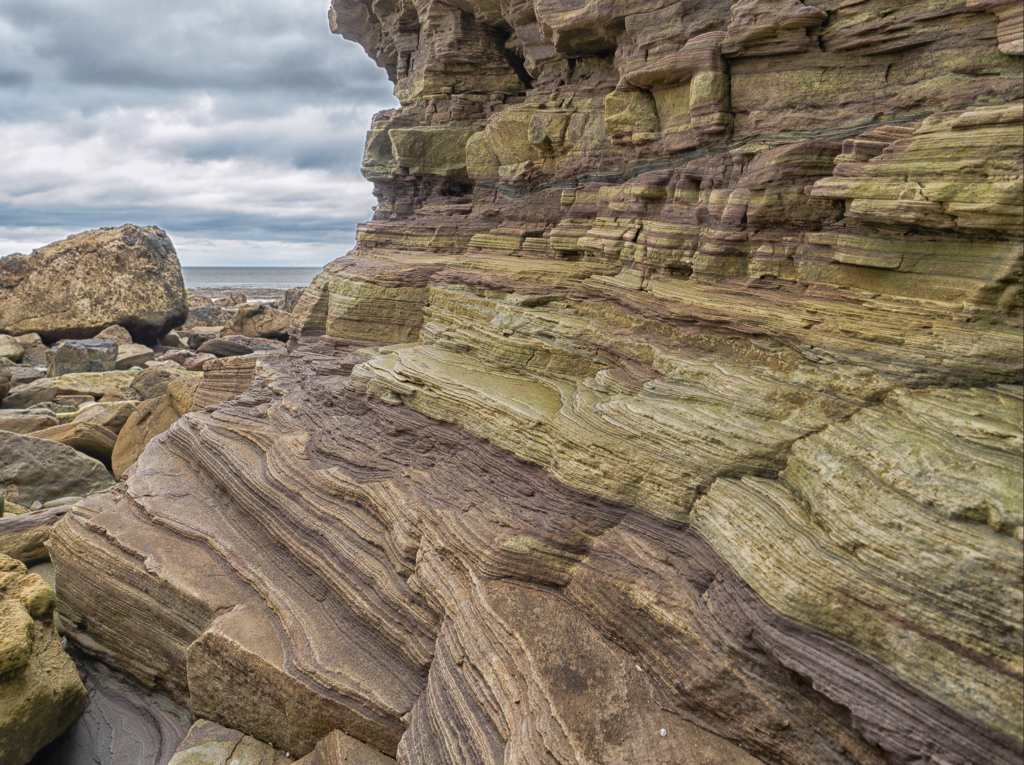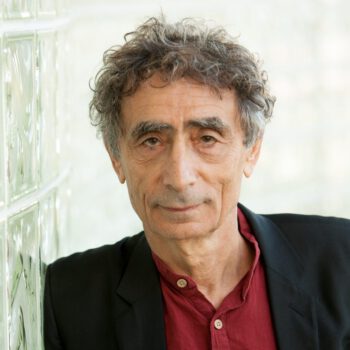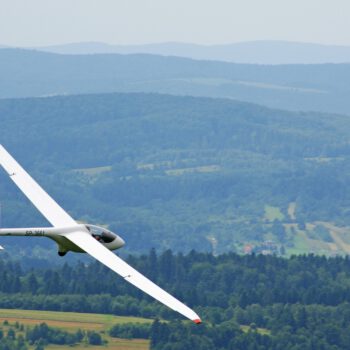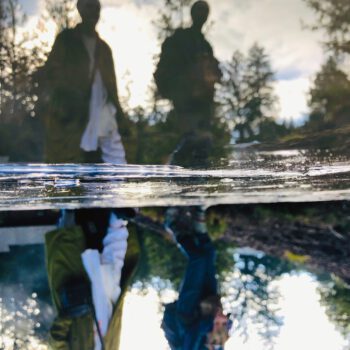By Sat Dharam Kaur ND
Over the last few years, I have attended several Diversity, Equity, and Inclusion workshops to become more informed in my work with clients, and to apply what I learn to my role as a Compassionate Inquiry Facilitator. During the first workshop when the material was introduced, my initial reaction was, why were other species not included under this umbrella of Diversity, Equity and Inclusion? Surely these three words should apply to all species? How could we consider DEI principles for humans without simultaneously looking at how our collective actions affect other beings?
As we practiced exercises during the workshop to become aware of our unconscious biases and projections, and created space to hear firsthand how other individuals experienced oppression, I couldn’t help but extend DEI principles to other animals, and my heart ached. Who was listening and responding to whales, elephants, chimpanzees and a million other species threatened with extinction?
In a second DEI workshop I attended, the topic ‘layers of identity’ was explored. It was suggested that there were three types of identity: 1) individual identity; 2) group identity; 3) human identity. Again, this seemed incomplete to me. I believe that there needs to be at least two more layers of identity added to the equation – Eco-Identity and Universal Identity, which I will describe below.
Let’s have a look at these 5 layers of identity. As we go along, I invite you to explore your own 5 layers of identity and how they intersect.
1. First Layer – Individual Identity
Individual Identity refers to your uniqueness, how you are different from others, reflected in your personality traits, appearance, values, what you like to do in your leisure time, career choices, goals, food and music preferences, favourite books or entertainment, creative outlets and intellectual pursuits.
This uniqueness will be spelled out by your genes; by the epigenetic influences of your ancestors; and will be shaped by your childhood environments, including what happened to you in the settings of family, school, neighbourhood, community and country. It will also be influenced by the cultural, political, geographical and historical climate you were born into. The expression of this uniqueness also depends upon one’s awareness, opportunity, socioeconomic status and agency.
We all deserve to be free to express ourselves, and to be seen, heard, understood, and loved for our uniqueness, without needing to conform, or work hard to be accepted. Our uniqueness adds to the richness, resilience and diversity of the communities we live in. We seek to grow, discover what is possible for us, and expand into whom we can become. In some environments our uniqueness is welcomed, valued, encouraged and respected; in other settings it may be ridiculed, disregarded, suppressed or oppressed. We may have internalized the judgement of others as children, and this self-belittlement constrains our self-expression as adults. When we recognize this and replace self-criticism with self-compassion, it becomes easier to extend acceptance, curiosity, compassion and understanding to others.
Aspects of my uniqueness include a love of the forest and growing things, appreciation of and sensitivity to colour, strong bones, brown eyes, a talent for writing and teaching, and enjoyment of travel and adventure.
How would you describe your unique individual identity? How do you express your uniqueness? In what environments do you feel free to express yourself, and in what other environments do you hold back? What holds you back?
2. Second Layer – Group Identity
Group Identity relates to what we have in common with some other people – nationality, race, culture, ethnicity, gender, sexual orientation, ability, religion, socio-economic status, age group, political party affiliation, areas of activity or study, and level of education. Some of these group identities are assigned at birth or assumed because of where we live, while others are chosen. Some are earned, such as university education or fitness level, and others are not, such as racial identity and height. Some are taught to us, such as religious beliefs, and others are caught from observing the modelling of those around us, such as racial biases. Some come with power and privilege, such as being a man, having higher socio-economic status or being white, while others do not.
Certain group identities will be constant throughout our lives, such as skin colour or ethnicity, while others may change, such as political party, religion and socio-economic status. Belonging to a particular group can build safety, trust and connection, or may elicit pride, anger, grief or shame in us, depending upon the actions of the group, or the reactions from an opposing group.
Our affinity with a particular group may predispose us to adopt a negative perception or stereotype towards members of another group. This unconscious bias results in prejudice, discrimination, or exclusionary behavior toward the outsiders, based on characteristics such as race, ethnicity, gender, religion, political views, nationality, age, or socioeconomic status. It can be challenging to be loyal to one’s own group and simultaneously sympathetic, curious and open to the perspectives of a different group. We are conditioned to take sides.
When we have identified with a particular group, it may be difficult to leave the group even when the group is no longer comfortable for us, due to the number of years we’ve invested in this identity, the financial and emotional cost of leaving the group, the fear of judgement from others, the isolation that will ensue when we leave our friends and associates, or the risks or danger involved in separating from the group. This group could be a family, a political party or a religious group, to name a few.
On the other hand, a healthy group satisfies our need for belonging and can become a safe relational container in which we can be vulnerable, share our emotions, explore our triggers, express our authenticity and creativity, develop our talents and capacity, and repair some of the childhood wounding experienced in our family of origin. An unhealthy group may do the opposite.
Some of my group identities include being a Canadian, interacting with my family members, being of Polish descent, being part of a group of yoga practitioners, having a role in the Compassionate Inquiry community, being a woman, a mother and a member of the naturopathic profession.
What are the group identities you carry? Are there any groups you are ‘against’ because of the group you are aligned with? How does your individual identity enliven a group identity? Are there parts of your individual identity that are not received or included in a group identity? Are there parts you hide?
Each time we move into the next layer of identity, there is a potential threat to our safety. As your individual identity encounters a group identity, the following questions may arise: will the group accept me? Can I be myself in the group? Will my needs be met in the group? Can I establish boundaries to protect aspects of my individual identity? If I express my views, will I be judged or ridiculed? Will I be forced or expected to act in a way that is not aligned with my values? Will I be protected in this group? What are the expectations of me in this group, and can I fulfill them? Will I be punished if I don’t fulfill expectations? How will I benefit from this group? Will this group reject me?
When the individual identity is absorbed into a healthy group identity, the ideal is a greater level of connection, meaning, opportunity for learning and growth, self-actualization, self-expression, social engagement and safety. This is the climate we endeavour to create in our Compassionate Inquiry community.

3. Third Layer – Human Identity
Human Identity reflects what you have in common with all people. When we see others as ‘humans like us’, we experience a common bond, and recognize that we all have feelings, bodies, needs, rights and aspirations, despite differences in colour, gender, size, age, race, religion or education.
A beautiful aspect of the Compassionate Inquiry process is recognizing ourselves in others, whether they be clients or fellow course participants. Much of the time when I explore an issue with a client, I learn something about myself – we have the same issues despite coming from diverse backgrounds. As humans we share common emotional experiences, such as grief after the loss of a loved one; joy with the birth of a child; anger at oppression and injustice; and fear before exams or public speaking.
We may reside in countries with vastly different economic and political structures resulting in inequity. In spite of this, we confront common human challenges, such as relationship issues; financial insecurity; career changes; finding housing and food; family responsibilities and stressors; and health concerns. Many of us experience traumatic events as children, regardless of where we live in the world. These traumas can include physical or sexual abuse, neglect, parental divorce, a family member with addiction, or exposure to violence in our homes.
We pass through the same life cycles, going through a birth experience, early childhood development, the teenage years, young adulthood, middle age, old age and the dying process. Each of these phases requires navigation, adaptation, guidance and support. Similar developmental, psychological and physiological processes occur for all humans as our lives unfold.
The Universal Declaration of Human Rights (UDHR), adopted by the United Nations General Assembly in 1948 recognizes the universal, inalienable rights of all humans, including the right to life; freedom from discrimination; free expression; freedom of religion; access to clean water, housing, and food; and the right to health care and education. The recognition and protection of human rights varies in practice across different countries and regions, and is sadly lacking in much of the world today. However, the principles enshrined in these international instruments affirm the inherent dignity, equality, and rights of all human beings, regardless of race, ethnicity, gender, religion, or ability.
While there is genetic diversity among humans, we share a common genetic heritage that unites us as a species. This genetic similarity underlies our shared biological traits, evolutionary history, and capacity for cooperation, communication, and empathy. Our common evolutionary ancestry can be traced back to the first humans in Africa approximately 200,000 years ago.
Our collective human ancestry has included hunting and gathering, tool-making, cultivation of food and livestock, the building of shelters and villages, and the creation of over 7,000 languages. Every human group generates art, music, literature, dance and rituals that can be appreciated by other humans, irrespective of background and culture. All humans need relationships, families, friendships and communities for support, companionship, a sense of belonging, and opportunities for collaboration, cooperation, and shared experiences. We are wired for connection and empathy, despite differences.
As a human, I appreciate my capacity to move my limbs; make things with my hands; and express with my voice and writing. I value my freedom to choose what to read and learn; and a career that I find fulfilling. I value my capacity to create, and to make choices that are in line with my values.
I enjoy hearing about others’ experiences, studying world religions, sharing meals together, going on vacation with my family, and sampling the cuisine, music and art in foreign countries.
What do you value most about your humanness?
Though I recognize the logic of these three layers of identity, the picture is still incomplete. Now I will describe Eco-Identity and Universal Identity.
4. Fourth Layer – Eco-Identity
Eco-Identity refers to how we perceive ourselves and how we act in relationship to the non-human world; the life-forms, elements and environment around us. We, and all living and non-living natural phenomena on this planet could be called Earth Beings. Mountains, oceans, coral reefs, deserts, rivers, and all species are included in the category of Earth Beings. This is a large part of how I see myself – in relationship to the trees, plants and animals, soil, water bodies, rock formations, air and weather patterns. I call this my Eco-Identity, which is intrinsically woven into the landscape I inhabit and the living beings that inhabit it with me – the coyotes that howl at night, the deer that I see swiftly cross the road as I drive to work on some early mornings, the feral cats hunting in the fields, and the monarch butterflies that find the milkweed that has been planted for them.
Each of my actions affects the soil, water bodies, air and species that are my neighbours, as well as other humans and the whole planet, as is evident from the climate crisis humans continue to generate. I believe that a huge part of our current short-coming as homo sapiens is that we do not consider ourselves in relation to other Earth Beings. Our colonial and patriarchal mindset is to dominate, control and destroy. It is this lack of right relationship that has caused us to wreak devastation on much of the planet, without thought of our impact on other species, or on the water, soil, air and climate that provide us nourishment. Each of these actions has consequences. What we do to the earth, we ultimately do to ourselves.
If we paid more attention to our eco-identity, it would have profound effects on our societal structures, actions and government. There would be a paradigm shift in identity from being self-centred as a species to Earth-centred. Being in relationship to our Eco-Identity will benefit our collective eco-future. It brings me joy to recognize that in some parts of the world there is a shift in this direction to acknowledge the rights of rivers and species. In recent years several rivers, including the Magpie River in northern Quebec, sacred to the Innu First Nation; the Whanganui River in New Zealand; the Klamath River in the US; the Ganges and Yamuna Rivers in India; and the great Amazon River in South America, have been granted ‘personhood’ to empower them with legal rights against threats such as mining, encroachment, pollution and hydroelectric dams. The city of Toledo, Ohio, granted personhood to Lake Erie in 2019 in an effort to legally protect it from agricultural runoff.
We have a very long way to go to extend this respect to other species. The United Nations released a report in May of 2019 informing humanity that over one million species of plants and animals are endangered and threatened with extinction over the next few decades. In February 2024, another UN report revealed that 44 percent of migratory species are experiencing a population decline, while 22 percent are on the verge of extinction. Their greatest threats are loss of habitat due to human activity, and overexploitation related to hunting and fishing. Climate change, pollution and invasive species are also contributing factors. Unsustainable human activities jeopardize the future of our planet’s delicately orchestrated ecosystems.
On a more positive note, in 2010 an international Declaration of Rights for Cetaceans was formulated, declaring dolphins and whales as ‘persons’ deserving of non-human legal rights, including freedom of movement and residence and restrictions on breeding, capturing, killing or enslavement. A global movement for cetacean rights was initiated in 2012. In 2013, the Ministry of Environment and Forests of India issued a policy statement recognizing cetaceans (including whales, dolphins, and porpoises) as non-human persons with certain rights. India effectively banned the keeping of dolphins and other cetaceans in captivity for entertainment purposes. In 2014, New Zealand passed legislation recognizing certain animals, such as great apes, dolphins, and elephants, as “sentient beings” with the right to be free from pain and distress.
It is ludicrous and supremely tragic that the current human-controlled collective political and legal systems are required to decree the rights and potential survival of species which the earth has spent tens of millions of years perfecting. In a few hundred years one dominant species has flourished to threaten the earth itself as a living organism. It is our current responsibility to recognize what humans have done and continue to do to harm the earth, and to build a collective eco-identity that preserves, protects and respects the natural world and other species.
My choice to be a vegetarian in my late teens is a reflection of my eco-identity, as is purchasing an electric car rather than one that uses fossil fuels. I am fortunate to live on a farm where I can grow much of my own food and tend to an orchard. We use solar panels for power and heat with wood. The majority of our acreage is left uncultivated, and is home to deer, skunks, raccoons, coyotes, rabbits, porcupines, garter snakes, mice, moles, mink, foxes and many other creatures. My hope is that the land we live on provides a safe home and migration corridor for other animals. I am pleased when the monarch butterflies visit in the summer and enjoy hearing the coyotes howl at night.
How would you describe your eco-identity? How active is your eco-identity in protecting the natural world and other species?
5. Fifth Layer – Universal Identity
The outer circle of these nested identities is what can be called Universal Identity – which refers to the consciousness or essence within all beings that is creative, divine, pure, whole, indivisible – whatever names you want to give it. In this identity there is no separation or division. Together we are One consciousness. This identity extends beyond planet Earth, and beyond space-time. It has no limits and includes all. It is both omnipresent and local. It is beyond the mind, body and brain, and is unaffected by social and cultural influences. It can be called infinite awareness or true self. Many spiritual traditions describe this as the true reality.
The experience in this merged state is one of being bathed in unconditional love and inner light. When we access this universal identity, we recognize that we exist in relation to everything else – interdependent, in communication and connected. You may have tapped into this universal identity through yoga, meditation, psychedelics, ritual, near death experiences or deep connective encounters with others or with the spiritual realm.
The universal identity can embrace, integrate and inform the other four identities. When this occurs, we are in harmony with wholeness. It becomes easier to accept the imbalance, inequity, pain and suffering that exist in the world without being overwhelmed by it. When we access universal identity, we can follow through with actions that contribute to the well-being of the whole. We may be able to infuse compassion into the environments we find ourselves in.
In relating to universal identity, we recognize that what we say, think or do affects everything else. We co-create together as one unified organism through our shared consciousness.
My experience of universal identity has come primarily through the practice of yoga and meditation.
What is your experience of universal identity? How does your access of universal identity support your other four identities?
What I would like to highlight is that we can navigate and respect all of these identities simultaneously, within ourselves and others. They coexist. If any one of them is denied, then we are not understanding the whole. Similarly, when speaking to someone or considering another species, river, mountain or aspect of nature, we can be aware that: 1) we exist in relationship to them, and their wellbeing is connected to our wellbeing; 2) we can practice ahimsa, or non-harming by asking ourselves if our action or inaction is having a negative effect on another person, species or aspect of nature, and adjust our individual and collective actions accordingly; 3) we can meet others, human and non-human, at the level of identity from which they are communicating, and understand and respond to their specific perspectives or needs, while remaining aware of all layers of identity and the harmony of the whole.



